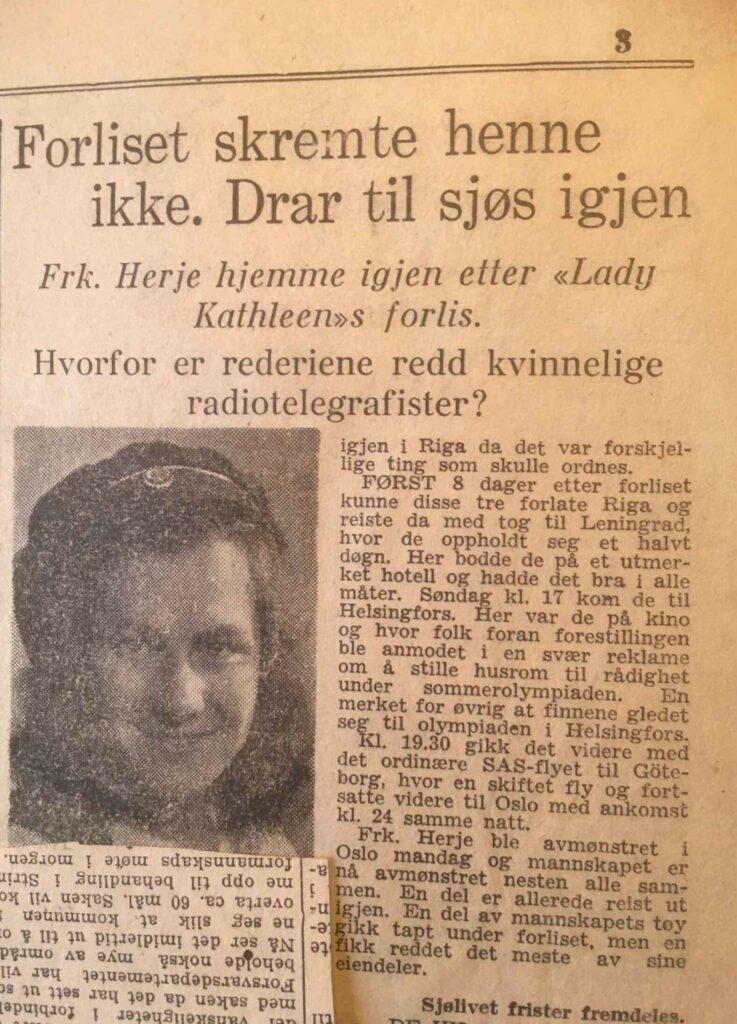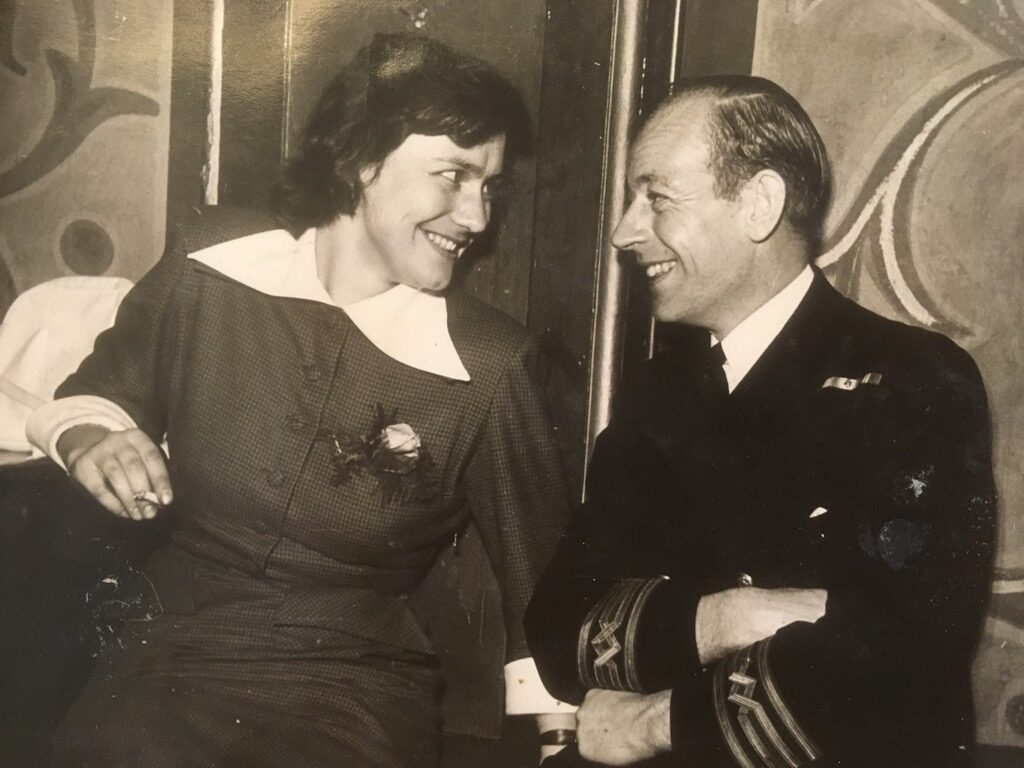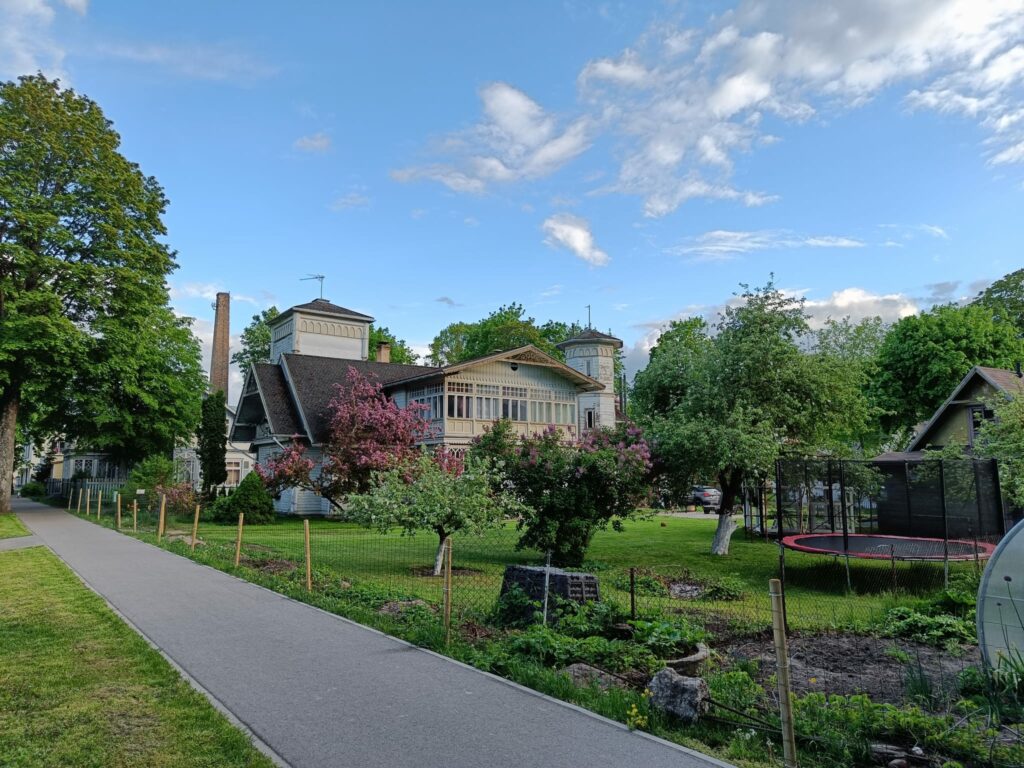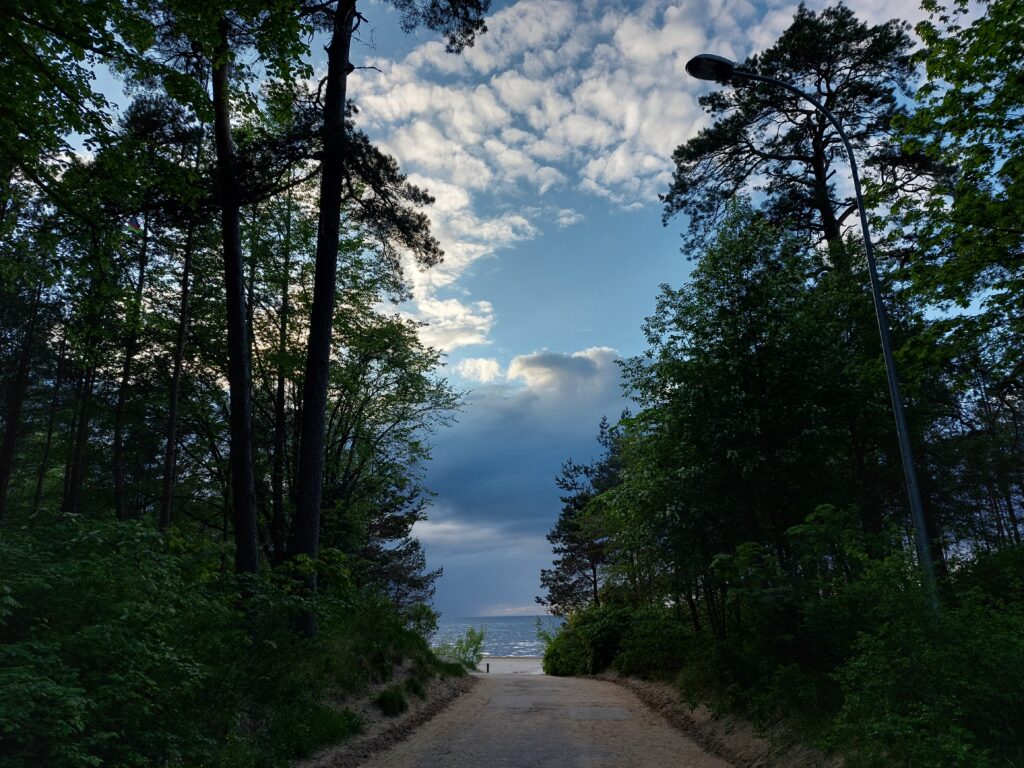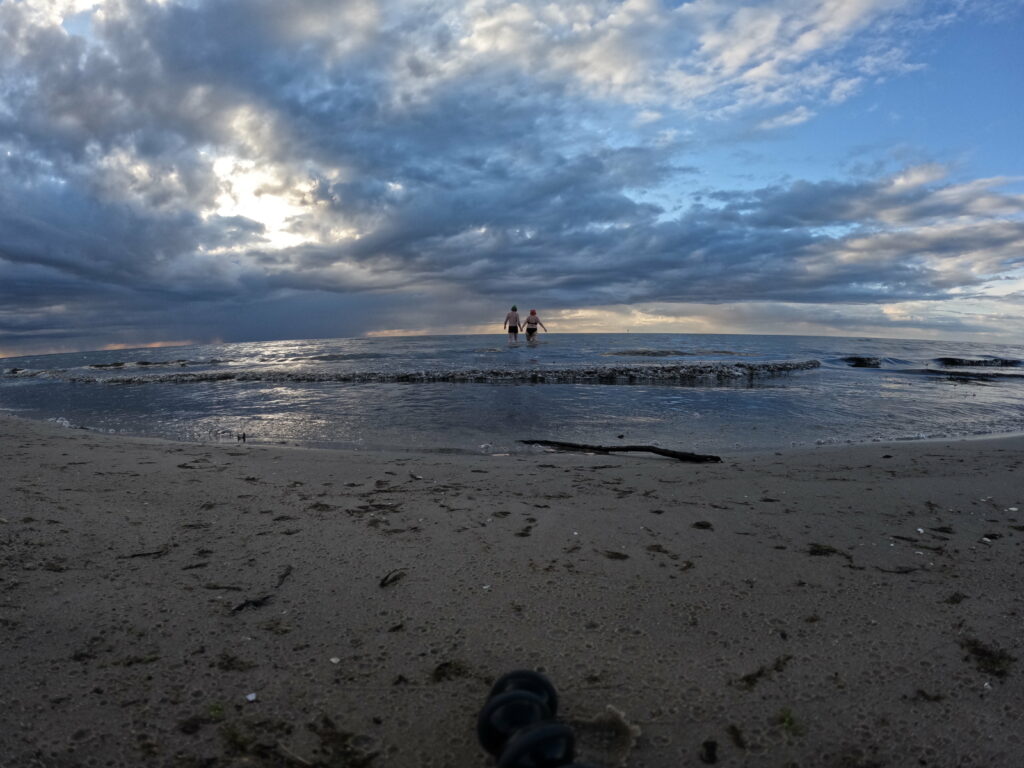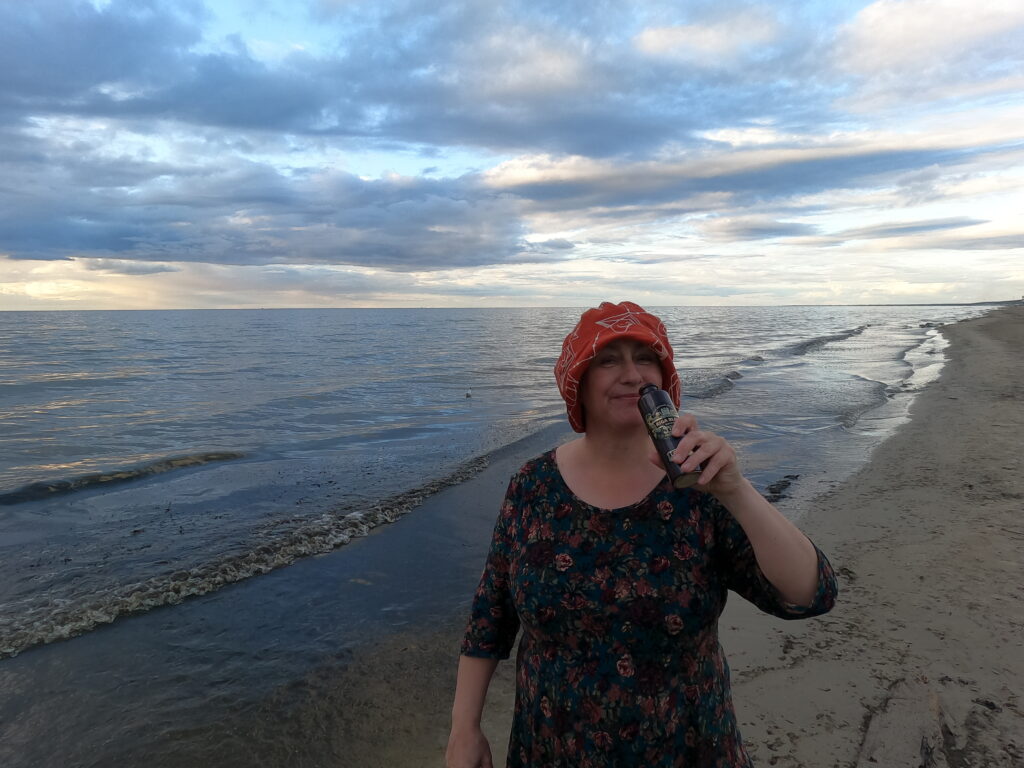The big internet had spoken: The search for “Lady Kathleen” showed lots of pictures of the wreckage of “Lady Cotlin”, about 2 km from the lighthouse Mangaļsalas bāka, that gives the way into the river Daugava. The wreck is actually visible in Google maps if you zoom enough!
This just had to be the same Lady? Further searches showed articles with different name varieties, dates and years (both 1951 and 1954 are mentioned) together with wild theories about who owned the ship and why she stranded.
As far as we know, this is what really happened:
The Norway registered ship Lady Kathleen stranded thursday 29/11-1951 at 20:30 after loosing steering speed while trying to connect with the pilot boat in awful weather.

The only woman on board, the telegraphist Kari Herje, 23 years old, sent SOS and hoped they would be saved. Riga in 1951 was in the middle of the cold war. All western people where considered capitalists and potential spies. Would the Sovjet coast guard even try to save them? If they heard the emergency call at all?
After sending SOS a while without response, Kari put the telegraph aside and tried the radio instead. Maybe a radio station would receive her call? There were several stations that used to respond, once she even received a proposal from a radio friend.
Yes! She received an answer: “What’s going on, Kari, are you in distress at sea? Do you want to call your mom?”. Well, yes, that seemed like a good idea, so Kari got to call her mother Margit Herje while the ship was rocking on the sandbank in the Riga Bay.
That is why the local newspaper Adresseavisa in Trondheim knew about the happening before the shipping company! The dramatic events produced a lot of newspaper articles: “Trondheim woman in distress at sea!”, “23 year old lady sent SOS while the ship was sinking!”, and “The wrecking didn’t scare her. Goes out to sea again.” were some of the headlines going around the country towards the end of 1951.

In the meantime, the rest of the crew reacted in a typical Norwegian fashion: They got drunk! There are at least two reasons to get drunk on a sinking ship:
1) It calms the nerves if you think you might be going to die
2) If the ship goes down, there is no point wasting all the alcohol
But yes! They were saved. The Sovjet guards sent a rescue vessel and saved the whole crew. Because of their condition, rumours soon started flying, about the ship beeing stranded because the seamen where drunk. The crew were lodged in a hotel, all on the same floor. And in the hallway: A lady on a chair, making sure no one left the place. That was OK for the first days. The crew needed to sleep things off and they got served food. But they weren’t allowed to leave the building. Norwegians were enemies in the cold war.
The third day one of the seamen got enough of this: “I’m going to town. NOW!”, “With or without that damned woman!”. Then all of a sudden they had arranged sightseeing in Riga with a bus. How thrilling! But as they passed the railroad station, Kari started to wonder. Something felt wrong. The mood. Lots of people, but no joy. A lot of luggage with kitchen utensils and everything. Where were all these people going? “They are going on vacation!”, was the answer they got. Many years later Kari understood that these people were being transported to working camps in Siberia.
Now that we knew the wreckage of Lady Kathleen still exists, we just had to take a new trip to Riga Bay, this time to the east of the river Daugava. The plan was to take the train to Vecāķi, but we missed the station and departed in Kalingale instead.

At this point we started to feel that our vacation was a little off the beaten tourist track. Idun wanted to use the expression ‘off-pist’, but Knut insisted that since there were tracks, we were: ‘off-road’, not ‘off-pist’.

After 20 minutes of walking in a high high pine forest, we finally found the ocean. And yes! There are miles and miles of beaches on this side of Daugava as well. We walked along the beach about an hour. The Baltic sea isn’t really crowded at the end of may, but we did meet a few souls. Some walking their dog, some training with or without music in their backpacks, and a few treasure hunters with sticks: Looking for shells or amber.

After about half an hour (about where we would have been had we departed on the right train station), we saw a big rock in the ocean. Could it be the Lady? Is she really still there, after such a long time?

Yes! The remains of Lady Kathleen are still visible, 72 years after she stranded. She is getting a bit worn out, but still hanging in there.

Time to start swimming! Lady Kathleen is popular among the birds, but the comorans left the ship long before we arrived. The only life we saw where lots of sand flies. The water was very dark and we couldn’t see anything below the surface. But we got to touch the wreck. This was a strong moment for Idun. With another outcome of this event, none of Kari’s five children had been born.

Of course we swam around as well.

Back on shore we were colder than we had expected. There were 230m to the wreck and the water temperature was around 12 degrees Celsius. Both felt cold in the beginning of the swim, but then we got used to it, and everything felt OK until we started getting dressed again. Then we realized the fingers were rather stiff!
So we warmed ourselves with another toast to the memory of Kari.

Since there were many varieties of the story online, Knut relieved his inner detective and started searching for the truth. Which brought him to this building in the forest at Sognsvann in Oslo:

The binder was ordered online and waiting when he arrived:

Aside the official wreckage report, there was a lot of correspondence around who was going to pay for the crew staying in Riga and the transport home. Kari described the train to Finland as rather simple – type cattle wagons. One danish crew member “went berserk while drunk” and destroyed everything in his hotel room. The Sovjets sent a demand of 11 113 rubles for ruined inventory, which the shipping company didn’t feel responsible for. According to Kari, several of the crew members went rather crazy, pooped in the stairs and harassed the personnel. Maybe the demand wasn’t too high anyway?
Strangely enough, the official wreckage report mentions both Friday 28/11 and Friday 30/11. From other documents we are quite sure that the Lady stranded Thursday 29/11 and that the crew were saved on Friday 30/11.


We have really enjoyed this process, both finding the wreck and the papers telling the history of what happened. Never too late to do research about Lady Kathleen!

